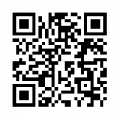Kity Table Saw
TODO: pictures, English manual
- Model: Kity Série 8 819
- Datasheet (in Deutsch): File:Kib 819.pdf
- HSE information sheet: File:Wis16.pdf
Overview
The table saw is arguably the most dangerous power tool in the workshop.
Before using it think carefully about the cut you are about to make, understand the causes of kickback and trapping.
Think about the journey of the work through the cutting process, where you will stand where other people are working, where the cut and off-cut will end up. where to position out-feed rollers if needed.
Is there better saw to make the cut? for a cross cut, use the radial arm saw or miter saw. for small pieces of timber a handsaw. We have a range of saws available, the table saw is the most complex in terms of managing the hazards and has the highest potential for causing serious injury
The Hackspace's Kity table saw has two mechanisms for guiding the work through the saw, a sliding table attachment, this can be used for cutting large sheet materials and cross cutting, and a Rib fence for rip cutting, the two are mutually exclusive do not use both together.
If while cutting the work gets stuck in the cut, becomes difficult to manage or starts to smoke and char, stop the saw with the switch and allow the blade to stop spinning before clearing the work from the table.
Signage
Read the signage near the saw.
Fire
Work can trap if the rip fence is positioned incorrectly or not parallel to the blade, if the timber is resinous or warps after it is cut with the grain structure, this causes the work to heat up very quickly to the point that embers can form (see the sign on the wall). If you are making fine cuts using the rip-fence take particular care if the work starts to trap, STOP work. thin slivers of charred timber can fall below the blade and with the draft from the exhaust raise a fire under the saw, immediately Inspect and clear the area below the blade.
Inspection and cleaning
there is window on the side to inspect the base and blade chute for wood chips. release the sliding table ( lever on the front of the sliding section) and move it fully forward such that the area below the blade can be inspected from above, Unplug and clear any debris with a vacuum cleaner.
YouTube Safety induction
Aquatint yourself with following videos
thintz12 Kickback, table saw accident: https://www.youtube.com/watch?v=u7sRrC2Jpp4&t=140s
Dan Gelbart, Building Prototypes part 2 of 18 Safety: https://www.youtube.com/watch?v=1H9ei8-6tEM
Jimmy DiResta Table Saw Tips: https://youtu.be/UKWIZM9aI5Y
Other videos are available of course, but be aware some more popular you tube woodworkers don't follow best practice when it comes to safety
The New Yankee Workshop Table Saw 101 is ideal but not freely available on YouTube NB: not all these tips are suitable for our tools - if in doubt, ask!
IMPORTANT RULES FOR USE
- Do not assume that the previous user has left the tablesaw in a safe and well-adjusted condition
- Use the dust extraction
- Check that the floor is free of loose sawdust and debris
- Use eye and ear protection
- Learn how to make adjustments on this model before you start work
- Know where to stand to avoid trouble
- Understand the causes of binding and kickback
- Never use the rip fence as a guide for cutting wood to length. The offcut piece is likely to become trapped between the fence and the saw blade and pose a serious kickback hazard.
- Shut down the machine for all adjustments and cleaning
- Especially avoid leaning or reaching over the moving blade
- Always use the push sticks provided (or make your own)
- Shut down the machine before retrieving work and offcuts from the outfeed table or use a pushstick to move a piece into a safe position to reach
- If in doubt, ask!
Don’t remove the guard
- if you think you need to remove the guard then you are probably using the wrong tool or using the tool wrong
- find another way of doing it
- consider using the router for blind (non-through) cut (avoiding riving knife/guard)
- a temporary guard or jig can be constructed
- consider using the deep bandsaw for tall cuts (max. 104mm) that would foul the guard body of fixings
Cross cutting
Consider using the chop saw (usually the right tool for the job) Never use the long rip fence when crosscutting boards for accurate lengths use a shorter secondary fence or a stop on the sliding carriage
Don’t be a douchebag/contemptible fellow
- Think ahead: do you have time to tidy up? If not then don’t start the job
- Immediately after use, sweep down the machine THEN sweep the floor (and put the dust in the bin!)
- Don’t leave your offcuts or spare materials - take them away and put them in the right place (bin, small blocks area, materials area, home)
Adjustments and alignment
TODO: photos
- blade height wheel (and lock screw) - TODO document the badly worn spindle
- blade angle wheel (and lock screw)
- fence attachment flip - temporary, sacrificial fences
- Sliding carriage lock
- crosscut attachment fitting and removal
- zero-clearance throat plates
- blade replacement

